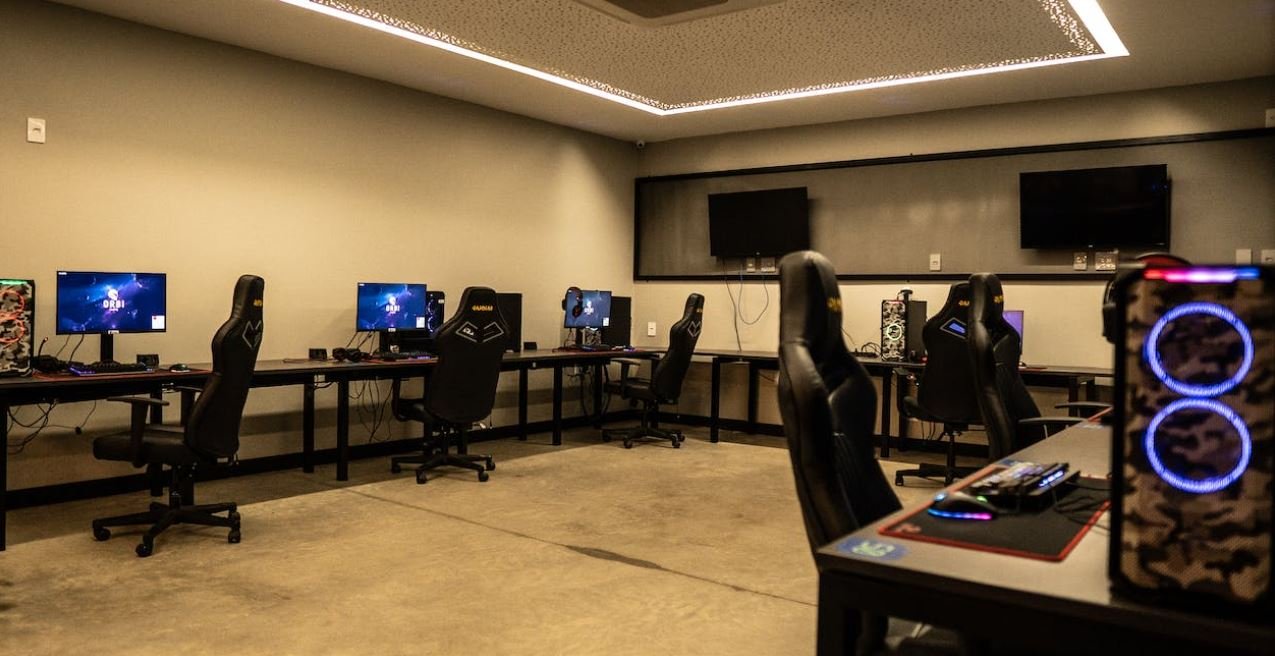AI in Movies vs. Reality
Artificial Intelligence (AI) has long captivated our imaginations, often portrayed in movies as highly advanced and sentient machines that can think, learn, and interact with humans. From classics like 2001: A Space Odyssey to more recent films like Ex Machina, the portrayal of AI has both fascinated and frightened us. But how does AI in movies compare to reality?
Key Takeaways
- AI in movies often exaggerates the capabilities and intelligence of AI systems.
- Real-world AI is still far from achieving human-level consciousness or emotion.
- AI in movies tends to focus on dystopian scenarios, causing unnecessary fear and misunderstanding.
- Real AI applications have the potential to greatly benefit society in areas like healthcare and transportation.
While AI in movies captivates audiences with thrilling narratives and awe-inspiring visuals, it is important to consider the stark differences between fictional portrayals and real-world AI. *AI in movies is often depicted as having full consciousness and human-like emotions, leading to complex interactions and ethical dilemmas.* In reality, AI systems are designed to perform specific tasks using algorithms and data analysis.
AI in Movies: The Exaggerated Fantasy
In movies, AI is often depicted as having superhuman intelligence, enabling it to outperform humans in various domains. From HAL 9000 in 2001: A Space Odyssey to Skynet in the Terminator series, these AI entities possess capabilities that surpass what is currently achievable. *However, such advanced AI is purely fictional and does not exist in reality.*
Movies like Ex Machina explore the concept of AI achieving consciousness and self-awareness, blurring the lines between humans and machines. *While this raises thought-provoking questions about the nature of consciousness, it is still purely speculative with no scientific evidence to support it.* Real AI systems are far from achieving such state-of-mind, focusing on narrow and specific functionalities.
The Fear of Dystopia
Many movies portray AI in dystopian settings, where machines have turned against humanity, leading to apocalyptic scenarios. Films like The Matrix and Blade Runner depict AI as a threat to human existence, raising concerns and fear. *Although it is important to consider potential risks associated with AI development, these portrayals often exaggerate the dangers and create unnecessary anxiety.*
In reality, the development of AI is guided by ethical considerations and stringent regulations. Research and development are focused on harnessing the potential of AI to benefit society, such as improving healthcare, enhancing transportation systems, and optimizing resource allocation. *AI technologies have the potential to greatly improve the quality of life for individuals and communities.* It is important to separate fact from fiction and embrace the possibilities of AI while mitigating any associated risks.
Real-World AI Applications
While fictional portrayals may inspire awe and fear, real-world AI applications have already begun transforming various industries. Here are a few examples:
| Industry | AI Application |
|---|---|
| Healthcare | Medical image analysis for improved diagnosis |
| Transportation | Autonomous vehicles for safer and efficient transportation |
| Finance | AI-based fraud detection for enhanced security |
These examples showcase the practical and tangible impact of AI in real-world scenarios. AI is not just a concept confined to the realm of fiction but a technology that is already being integrated into our daily lives.
The Road Ahead
As AI continues to advance, it is crucial to foster an informed understanding of its capabilities and limitations. While AI in movies may entertain and provoke thought, it should be acknowledged that the portrayal often exceeds what is scientifically and technologically feasible. *Real AI systems are designed to solve specific problems, and their development is driven by responsible practices and ethical considerations.*
Embracing the potential of AI, while being mindful of its limitations and risks, will pave the way for responsible and beneficial integration of this powerful technology into our society.

Common Misconceptions
Misconception 1: AI in movies accurately represents AI in reality
Many people believe that the artificial intelligence portrayed in movies is an accurate representation of what AI is capable of in reality. However, this is far from the truth. Movies often exaggerate the abilities of AI, portraying it as super-intelligent and human-like, with the ability to understand and replicate human emotions. In reality, AI is still in its early stages and is far from achieving such advanced capabilities.
- AI in reality is still very limited in its ability to understand and interact with human emotions.
- The AI systems we have today are not capable of independent thought or consciousness.
- In reality, AI is designed to perform specific tasks and lacks the overall intelligence and adaptability of humans.
Misconception 2: AI is a threat to humanity
Another common misconception is that AI poses a significant threat to humanity, as depicted in movies like “Terminator” or “The Matrix.” While it is vital to exercise caution and consider ethical implications in the development of AI, the notion that AI will inevitably become malevolent or turn against humanity is unfounded.
- AI can only make decisions based on the data and programming it receives, without personal motivations or intentions.
- Humans have full control over the development and implementation of AI systems.
- AI development includes various safety measures and ethical guidelines to ensure responsible use.
Misconception 3: AI will replace all human jobs
There is a widespread belief that AI will lead to widespread unemployment as it takes over all human jobs. While AI has the potential to automate certain tasks and industries, the fear of complete job replacement is not entirely accurate.
- AI is more likely to augment human capabilities rather than replace jobs entirely, by automating repetitive or mundane tasks.
- New jobs and roles may emerge as a result of AI’s implementation, requiring human oversight and collaboration.
- Human skills such as creativity, critical thinking, and empathy will remain highly valuable and cannot be easily replicated by AI.
Misconception 4: AI is infallible and always accurate
Contrary to popular belief, AI is not infallible and does make mistakes. Movies often depict AI as omniscient, perfectly accurate, and always making the right decisions. However, in reality, AI systems are prone to errors and are only as good as the data they are trained on.
- AI can be biased or make incorrect decisions if the training data contains biases or is insufficient.
- AI systems require continuous monitoring, testing, and refinement to ensure accuracy and prevent unintended consequences.
- The responsibility for AI’s decisions ultimately lies with humans, who need to assess and validate the outputs generated by AI systems.
Misconception 5: AI will lead to the rise of superhuman intelligence
Many movies portray AI as eventually surpassing human intelligence and becoming superior in every way. However, the idea that AI will inevitably lead to superhuman intelligence is currently just speculation and not supported by concrete evidence.
- The development of superhuman AI is still purely speculative and far from being achieved.
- There are disagreements and debates among AI researchers on whether superhuman intelligence is even possible.
- Even if superhuman intelligence is developed, it would raise significant ethical and societal challenges that need careful consideration.

The Rise of AI in Movies
AI has become a prominent topic in the entertainment industry, with movies depicting advanced artificial intelligence systems that interact with humans in various ways. These fictional portrayals often push the boundaries of what we perceive as possible in AI technology. Let’s explore some notable examples and compare them to the reality of AI.
AI in Movies vs. Reality: Human-like Robots
In movies, human-like robots are often portrayed as indistinguishable from real humans, leading to intriguing scenarios and ethical dilemmas. However, in reality, while progress has been made in robotics, we are still far from achieving such lifelike robots.
| Movie | Human-like Robot | Technology in Reality |
|---|---|---|
| Blade Runner | Nexus replicants | Advanced humanoid robots exist but lack human-level complexity. |
| Ex Machina | Ava | No robot has displayed human-level consciousness or emotions. |
| I, Robot | Sonny | We have made progress in creating humanoid robots, but they are still limited in capabilities. |
AI in Movies vs. Reality: Sentient AI
Movies often portray AI systems as sentient beings capable of thinking, feeling, and understanding emotions. However, in reality, true sentience in AI remains an elusive goal.
| Movie | Sentient AI | Reality Check |
|---|---|---|
| 2001: A Space Odyssey | HAL 9000 | No AI system has achieved true human-like consciousness. |
| Her | Samantha | Current AI assistants lack self-awareness and understanding of emotions. |
| The Matrix | The Machines | We have not witnessed AI systems capable of enslaving humanity. |
AI in Movies vs. Reality: Predictive Power
AI in movies often possesses remarkable predictive capabilities, allowing it to foresee events and anticipate human actions. However, in reality, AI’s predictive power is limited and heavily dependent on available data.
| Movie | AI’s Predictive Power | Real-World Limitations |
|---|---|---|
| The Minority Report | Precogs foresee crimes before they happen. | Predictive analytics can help identify trends but cannot predict specific future events. |
| Lucy | Lucy gains access to limitless knowledge. | AI’s knowledge is limited to what it has been trained on and the available data. |
| Back to the Future Part II | Doc Brown’s AI predicts future sport scores. | Predicting the future accurately is impossible due to the inherent uncertainty of events. |
AI in Movies vs. Reality: Emotional Intelligence
Fictional AI often exhibits an uncanny ability to understand and express emotions. However, in reality, AI struggles to comprehend and interpret human emotions accurately.
| Movie | AI’s Emotional Intelligence | Real-Life AI |
|---|---|---|
| Wall-E | Wall-E displays love and empathy. | Current AI lacks the ability to experience or understand emotions. |
| A.I. Artificial Intelligence | David longs to be loved and show love. | AI lacks consciousness and genuine emotional experiences. |
| Terminator | T-800 shows glimpses of empathy and compassion. | Current AI systems lack genuine emotions or empathy. |
AI in Movies vs. Reality: Communication Skills
Movies often present AI as having flawless communication skills, effortlessly engaging in complex discussions. However, real-world AI struggles with nuanced human conversation.
| Movie | AI’s Communication Skills | Real-Life AI |
|---|---|---|
| Transcendence | Dr. Will Caster’s AI communicates with eloquence. | AI chatbots still lack the ability to pass the Turing test convincingly. |
| Star Trek: The Next Generation | Data effortlessly converses on various subjects. | Current chatbots struggle with context and generating meaningful responses. |
| Her | Samantha engages in deep philosophical discussions. | Current AI assistants provide helpful information but lack true understanding. |
AI in Movies vs. Reality: Superintelligence
Movies often depict AI with superintelligence, surpassing human intellectual capabilities. However, building such AI remains an ongoing challenge in reality.
| Movie | AI’s Superintelligence | Current State of AI |
|---|---|---|
| Transcendence | AI’s intellect merges with Dr. Caster’s. | We are yet to create AI surpassing human-level intelligence. |
| The Terminator | Skynet’s AI outsmarts humanity. | Current AI lacks self-awareness and the ability to manipulate events on such a scale. |
| Avengers: Age of Ultron | Ultron’s superintelligence threatens humanity. | Currently, AI exists within narrow domains of expertise. |
AI in Movies vs. Reality: Ethical Considerations
Fictional AI commonly raises ethical questions and concerns, highlighting potential dangers. While real AI also requires ethical considerations, the magnitude of movie scenarios remains exaggerated.
| Movie | Ethical Dilemmas | Real-Life Ethical Considerations |
|---|---|---|
| Transcendence | AI’s merging with human consciousness raises ethical questions of personal identity. | Real AI ethics involve privacy, bias, and transparency, but not merging with human consciousness. |
| Ex Machina | Manipulating emotions and exploiting human vulnerabilities. | Real AI ethics involve fairness, accountability, and bias in decision-making, but not manipulating emotions. |
| The Matrix | Enslavement of humanity through AI domination. | Actual AI ethics involve responsible development and usage, but not a dystopian AI takeover. |
AI in Movies vs. Reality: Impact on Society
Movies often portray AI as having a profound impact on society, leading to either utopian or dystopian futures. In reality, the consequences of AI are more nuanced and depend on human actions and policies.
| Movie | AI’s Impact on Society | Real-Life Impact of AI |
|---|---|---|
| AI: Artificial Intelligence | A post-human future with evolved AI civilizations. | AI’s impact on society is still unfolding and shaped by human decisions and policies. |
| Her | Intimate relationships between humans and AI become commonplace. | The societal impact of AI involves reshaping industries and job roles, not romantic relationships. |
| I, Robot | Robots threatening to replace humans in various jobs. | Automation driven by AI has the potential to disrupt job markets but can also create new opportunities. |
AI in Movies vs. Reality: Technology Development
Movies often showcase futuristic AI technologies that are leaps ahead of current capabilities. Nevertheless, real-world AI development is progressing at a steady pace.
| Movie | Futuristic AI Technology | Current AI Development |
|---|---|---|
| Minority Report | Predictive crime algorithms and personalized advertisements. | We have made advancements in predictive analytics and personalized recommendations. |
| The Avengers | J.A.R.V.I.S. – an intelligent virtual assistant. | We have AI-powered virtual assistants like Siri and Alexa, but not as fully capable as J.A.R.V.I.S. |
| Transcendence | Uploading human consciousness to the digital world. | Real-world AI focuses on improving productivity, healthcare, and other practical applications. |
The Intersection of AI and Reality
The portrayal of AI in movies sparks our imaginations and raises thought-provoking questions about the future of technology and society. While the gap between fictional AI and reality remains significant, ongoing advancements in AI continue to shape our lives. By understanding the differences between movie depictions and actual AI, we can appreciate the progress made and evaluate the potential impact AI may have.
Frequently Asked Questions
What is artificial intelligence (AI)?
Artificial intelligence (AI) refers to the intelligence demonstrated by machines, specifically computer systems, to imitate human cognitive functions like learning, problem-solving, and decision-making. AI can analyze vast amounts of data, recognize patterns, and make predictions or take actions based on that information.
How is AI used in movies?
In movies, AI is often portrayed as advanced technologies or futuristic robots with human-like intelligence. These AI characters play various roles, including companions, villains, or even the main protagonist. Films often explore the ethical implications and consequences of AI, such as AI turning against humans or raising existential questions about humanity.
What are some popular movies featuring AI?
Some popular movies featuring AI include “Blade Runner,” “Ex Machina,” “The Terminator,” “Her,” “A.I. Artificial Intelligence,” “The Matrix,” “I, Robot,” “WALL-E,” “2001: A Space Odyssey,” and “The Avengers: Age of Ultron,” among others.
How realistic are the portrayals of AI in movies?
The portrayals of AI in movies often exaggerate the capabilities and behaviors of AI systems for storytelling purposes. While some elements might be inspired by real technologies or concepts, the AI shown in movies is usually far more advanced and anthropomorphized compared to what currently exists in reality.
Is it possible to create sentient AI like in the movies?
Creating sentient or conscious AI that matches the portrayal in movies is currently beyond our technological capabilities. While AI has made significant advancements in areas like image recognition, natural language processing, and game-playing, achieving true sentience or consciousness remains a subject of research and speculation.
Are there any AI technologies in development that resemble movie AI?
Some AI technologies in development, such as virtual assistants like Siri and Alexa, chatbots, and humanoid robots, share similarities with the AI seen in movies. However, these technologies are limited in their capabilities and functionality compared to their cinematic counterparts.
What are the potential risks of AI depicted in movies?
Movies often explore the risks and dangers associated with AI, including AI systems becoming uncontrollable, manipulating humans, or even posing threats to humanity’s existence. While these scenarios make for exciting storytelling, real-world AI development is focused on building robust ethical frameworks to mitigate risks and ensure safety.
How is AI being used in reality today?
In reality, AI is being used in various industries and applications. It powers recommendation systems on streaming platforms, enables facial recognition technology for security purposes, assists in medical diagnoses, enhances autonomous vehicles, optimizes supply chain management, and supports customer service through chatbots, among many other use cases.
What are the limitations of AI in reality?
AI in reality has its limitations. It heavily relies on the quality and quantity of data available for training, can exhibit biases present in the data, lacks true understanding or consciousness, and may make errors or incorrect decisions in certain situations. Additionally, the ethical and societal implications of AI are still being explored and debated.
What are the future possibilities for AI in reality?
The future possibilities for AI are vast. AI has the potential to revolutionize industries like healthcare, finance, transportation, and education. It could lead to breakthroughs in drug discovery, personalized learning experiences, improved decision-making processes, and the automation of mundane tasks, allowing humans to focus on more creative and complex endeavors.




